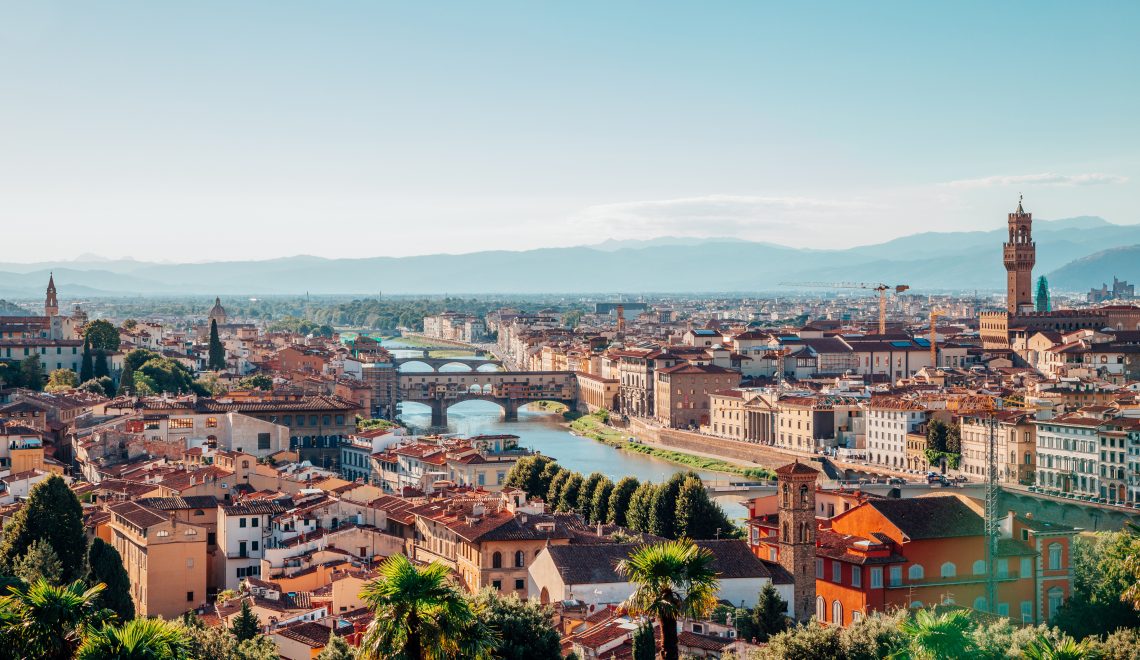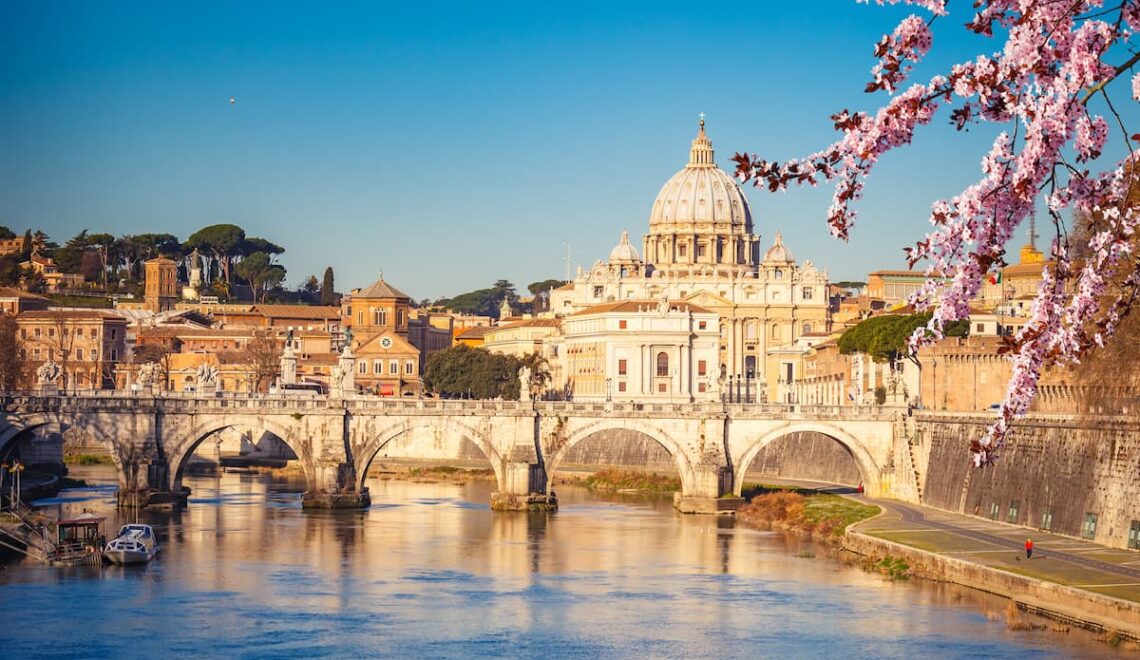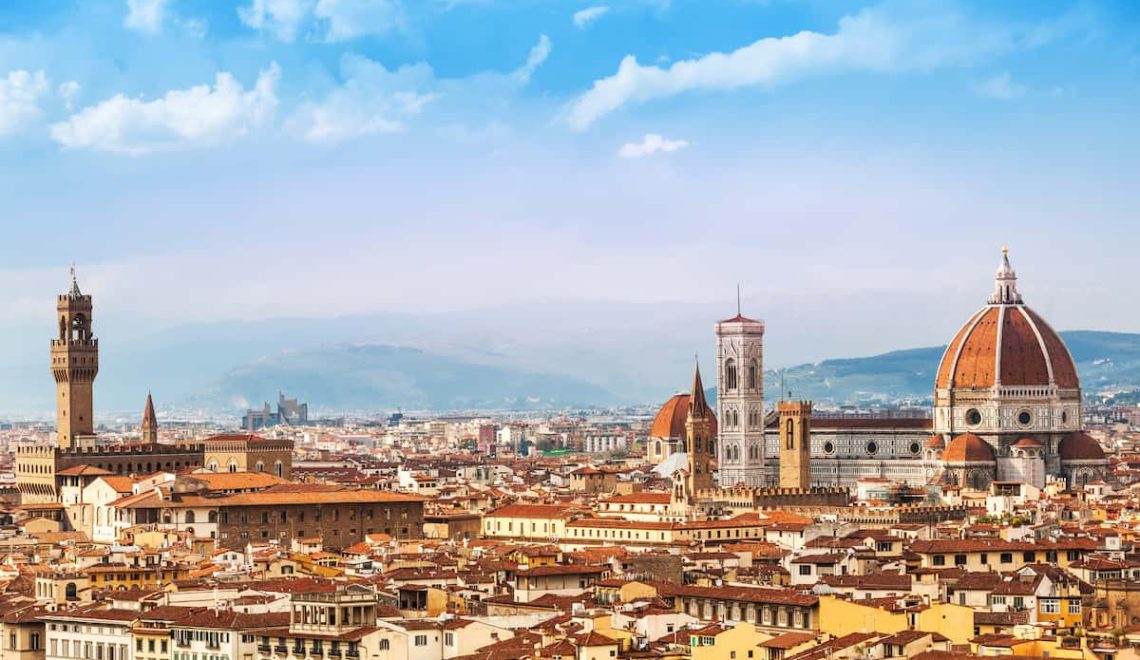
Florence needs no introduction: it is the cradle of the Renaissance, a city that shaped the history of world art and culture. Despite its countless wonders, the historic center is compact and entirely walkable, making it possible to discover its treasures even in a single day. Of course, one day is not enough to see everything, but it’s sufficient to fall in love with its timeless charm.
One-Day itinerary in Florence: what to see in a day
Morning: from the Duomo to Piazza della Signoria
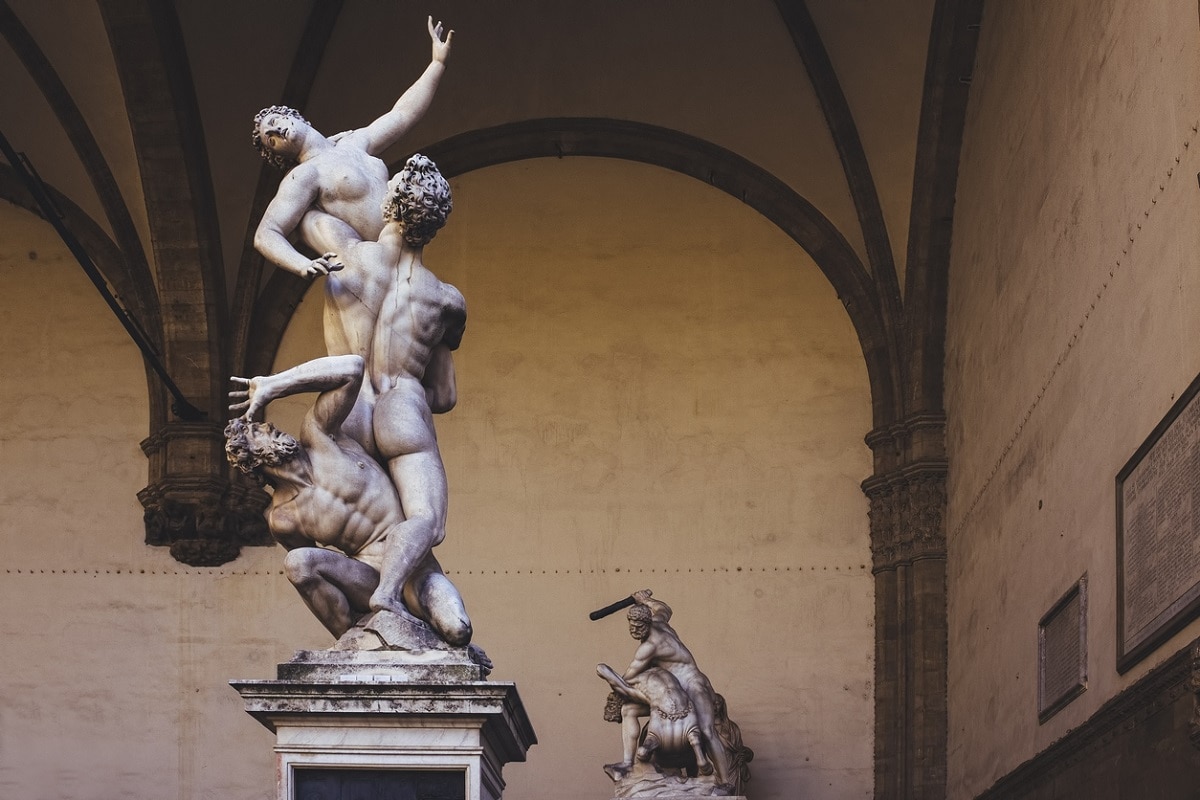
The day begins with the absolute marvel of Santa Maria del Fiore, Florence’s most famous cathedral. Brunelleschi’s Dome still amazes millions of visitors for its engineering genius, while the interior features grand frescoes such as Vasari’s Last Judgment.
In front of the Duomo stands the Baptistery of San Giovanni, famous for its bronze “Gates of Paradise,” and Giotto’s Bell Tower, clad in white, green, and pink marble.
A short walk down Via dei Calzaiuoli brings you to Piazza della Signoria, dominated by the majestic Palazzo Vecchio. The square itself is an open-air museum, with imposing statues like Ammannati’s Neptune and the Loggia dei Lanzi, which shelters sculptural masterpieces.
Lunch Break: Tuscan flavors between tradition and street food

For lunch, Florence offers the very best of Tuscan cuisine. If you want a quick meal, head to the city kiosks for the famous lampredotto, the ultimate Florentine street food. If you prefer a more relaxed break, choose a traditional trattoria where you can savor ribollita or pappa al pomodoro, hearty dishes that tell the authentic story of the city.
Afternoon: from Ponte Vecchio to the Uffizi
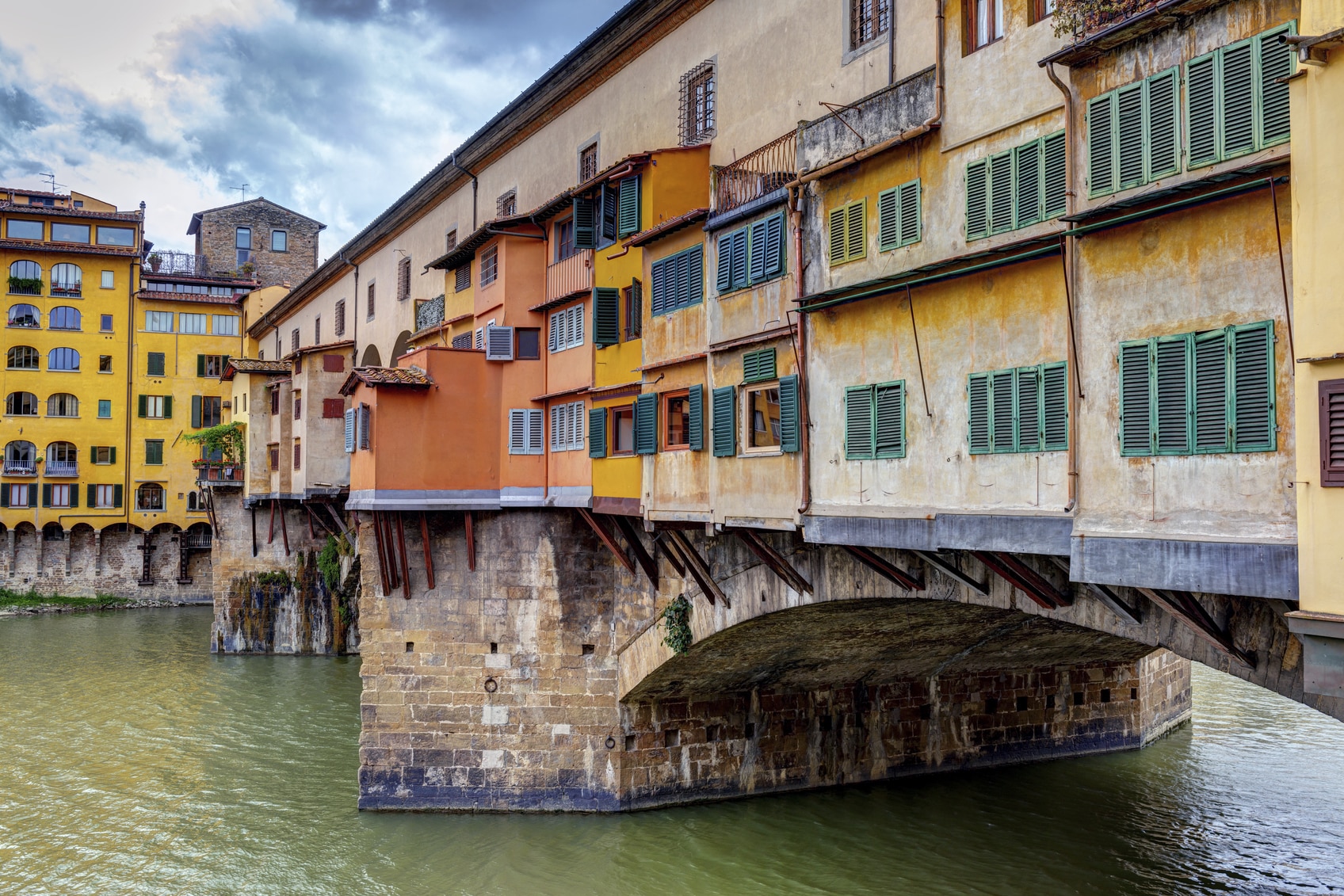
The afternoon is dedicated to two of Florence’s greatest icons. First stop: the Ponte Vecchio, one of the most photographed spots in the world. With its goldsmith shops suspended over the Arno, it offers picturesque views and a timeless romantic atmosphere.
Just steps away lies the Uffizi Gallery, one of the most visited museums in Italy. Entering means admiring masterpieces such as Botticelli’s Birth of Venus and Primavera, works by Leonardo da Vinci and Michelangelo, and Caravaggio’s dramatic canvases. This visit alone is worth the trip.
Sunset and Evening: Piazzale Michelangelo and unforgettable views

As daylight fades, head up to Piazzale Michelangelo, perhaps walking through the charming steps of the San Niccolò district. From here, the view is spectacular: the Arno River, the Duomo’s Dome, medieval towers, and historic palaces all glow in the colors of the sunset. It’s the perfect way to bid farewell to Florence, with a panorama that will remain etched in your memory.
Florence in One Day itinerary
Below, we propose a possible itinerary to visit the most interesting places in Florence in one day.
| Time | Activity | Location | Useful Notes |
| 09:00 – 11:00 | Visit the Duomo, Dome & Baptistery | Piazza del Duomo | Book tickets in advance |
| 11:15 – 12:30 | Walk to Piazza della Signoria & visit Palazzo Vecchio | Historic Center | Open-air museum, perfect for photos |
| 12:30 – 13:30 | Lunch break | Central Market or lampredotto stalls | Street food or trattoria |
| 14:00 – 16:30 | Visit the Uffizi Gallery | Piazzale degli Uffizi | Reservation recommended |
| 16:45 – 17:30 | Walk & photos on Ponte Vecchio | Ponte Vecchio | Romantic views of the Arno |
| 18:00 – 19:30 | Walk up to Piazzale Michelangelo | San Niccolò District | Stunning sunset views |
| 20:00 – 21:30 | Dinner | Central trattoria | Florentine steak or Tuscan dishes |
| 21:30 | Evening walk & return | Lungarno & city center | Suggestive night atmosphere |
Florence on foot: tips to optimize your time
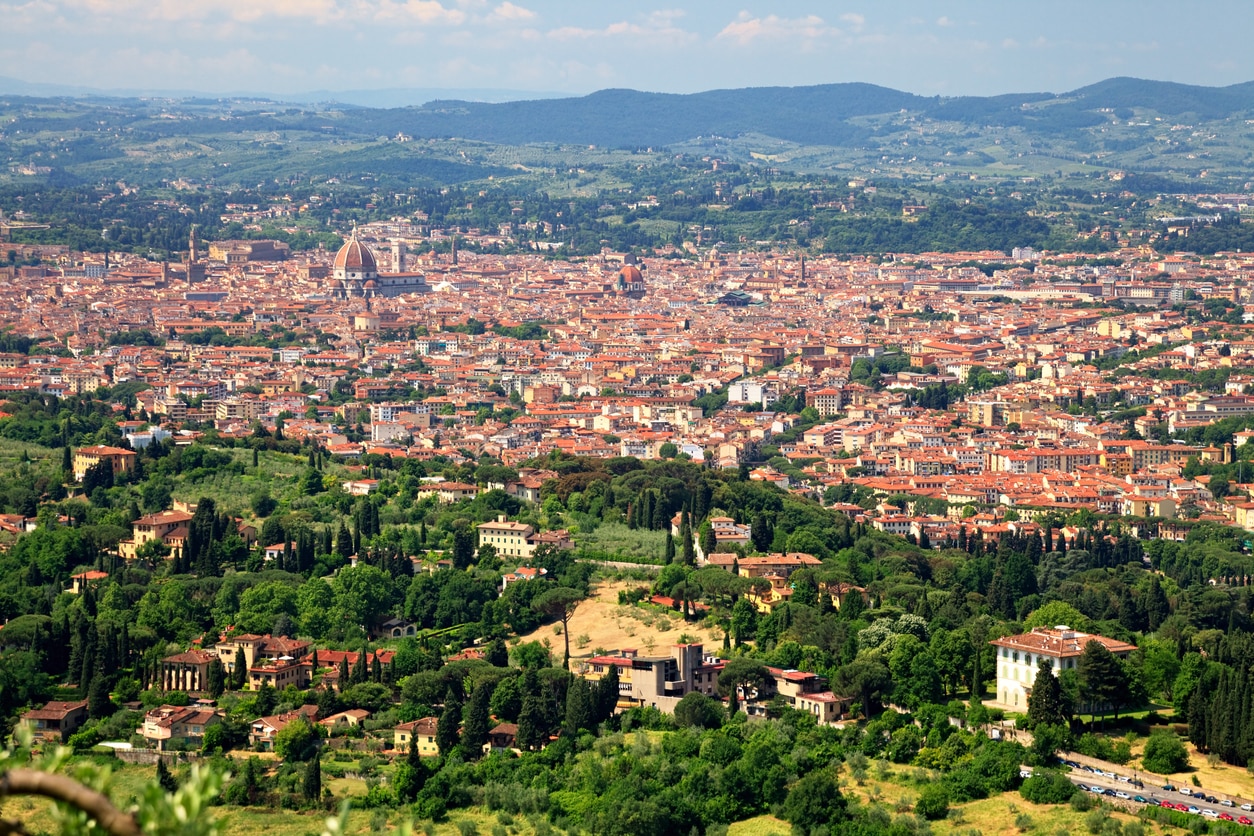
How to get to Florence with Italo
Thanks to Italo high-speed trains, reaching Florence is easy and fast. Santa Maria Novella Station is located right in the heart of the city, so you can start exploring on foot as soon as you arrive — no need for extra transfers or public transport.
With Italo’s convenient schedules, you can arrive early in the morning from major Italian cities like Rome, Milan, Naples or Bologna, making it perfect for a one-day trip. Spend the entire day discovering Florence’s masterpieces, enjoy a dinner in one of its charming trattorias, and then take an evening train back home — or, if you prefer, stay overnight and depart the next morning. It’s the ideal way to experience the beauty of Florence with total flexibility and comfort.
How to get around the historic center
The city center is entirely walkable, with only a few minutes needed to get from one attraction to another.
Tickets and recommended reservations
Book online access to Brunelleschi’s Dome and the Uffizi to avoid long lines. Alternatively, consider the Florence Card, which provides entry to multiple museums in a single day.
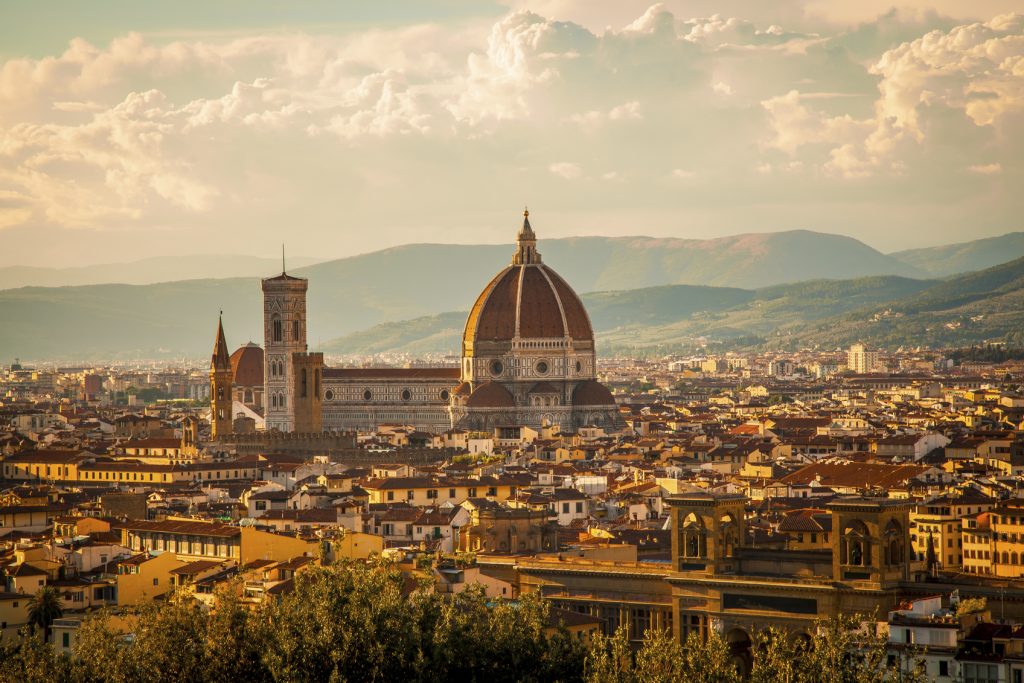
Florence 3-day Itinerary
Discover Florence in 3 days! Explore Duomo, Uffizi Gallery & more. Make the most of your trip. Start planning now!
Must-See places in Florence
The places you absolutely must visit in Florence are:
- The Duomo & Brunelleschi’s Dome
- Palazzo Vecchio & Piazza della Signoria
- The Uffizi Gallery
- Ponte Vecchio
- Basilica of Santa Croce
The Duomo and Brunelleschi’s Dome

An absolute masterpiece of Renaissance architecture, Brunelleschi’s Dome still leaves everyone who gazes upon it in awe. Built between 1420 and 1436 by Filippo Brunelleschi, it stands as one of the most extraordinary engineering achievements of all time — a self-supporting structure built without wooden scaffolding, an almost impossible feat for its era.
Rising over 116 meters high and measuring about 45 meters in diameter, the dome dominates Florence’s skyline and offers breathtaking views over the entire city. To reach the top, visitors must climb 463 steps, following a fascinating path through narrow passages between the two inner shells until reaching the lantern — from where you can enjoy sweeping views of red rooftops, rolling hills, and Renaissance landmarks.
Every detail of the dome tells the story of Brunelleschi’s visionary genius, combining geometric precision, innovative construction techniques, and a flawless sense of harmony. Even today, it remains one of Florence’s most recognizable symbols and an unmissable stop for anyone visiting the city.
Palazzo Vecchio and Piazza della Signoria

Palazzo Vecchio and Piazza della Signoria represent the political heart of historic Florence, a place where art and power have been intertwined for centuries. Surrounded by statues and masterpieces that celebrate the city’s grandeur — such as the replica of Michelangelo’s David, Ammannati’s Neptune, and Cellini’s Perseus with the Head of Medusa — this square is an open-air museum, a true symbol of the Florentine Renaissance.
Inside Palazzo Vecchio, which today serves as Florence’s City Hall and was once the residence of the Medici family, visitors can explore monumental rooms adorned with frescoes, intricate decorations, and original furnishings. Among the most remarkable spaces are the Hall of the Five Hundred (Salone dei Cinquecento), the Hall of the Lilies (Sala dei Gigli), and the Arnolfo Tower, which offers a breathtaking panoramic view over Piazza della Signoria and Brunelleschi’s Dome.
The Palazzo Vecchio is open daily, generally from 9:00 a.m. to 7:00 p.m., while the tower closes earlier, around 5:00 p.m. The standard ticket costs about €12.50, with discounts available for students, children, and seniors. It’s recommended to book tickets online, especially during weekends or the busy summer season, and to check updated hours and prices on the official City of Florence website before visiting.
If you enjoy unique experiences, you can also join evening guided tours or “secret passages” itineraries, which reveal hidden rooms and corridors once used by the Medici family — a fascinating journey through Florence’s most mysterious side.
Uffizi Gallery
A timeless treasure chest of art, the Uffizi Gallery is one of the most renowned museums in the world and a true journey into the heart of the Florentine Renaissance. Its halls are home to masterpieces by legendary artists such as Botticelli, Leonardo da Vinci, Michelangelo, Raphael, and Caravaggio, offering a fascinating walk through centuries of genius and beauty. Among its most celebrated works are Botticelli’s The Birth of Venus and Primavera, Raphael’s Madonna of the Goldfinch, and Michelangelo’s Doni Tondo.
Designed in the 16th century by Giorgio Vasari to house the administrative offices of the Medici family (hence the name “Uffizi”), the building soon became one of the first public art collections in the world. Today, its elegant corridors overlooking the Arno River also offer a breathtaking view of Ponte Vecchio and the city skyline.
The museum is open from Tuesday to Sunday, between 8:15 a.m. and 6:30 p.m., and closed on Mondays. Admission costs around €25 in high season and €12 in low season. To avoid long queues, it’s highly recommended to book your tickets online via the official website uffizigalleriestickets.com.
A tip for your visit: plan to spend at least two hours exploring the galleries and don’t miss the Uffizi Terrace, where you can relax with one of the most spectacular views of Piazza della Signoria.

Ponte Vecchio
A romantic and picturesque symbol of Florence, the Ponte Vecchio is one of the most iconic and photographed landmarks in Italy, beloved by travelers from every era. Originally built during Roman times, it was repeatedly destroyed by floods of the River Arno and reconstructed in its current form in 1345, probably designed by Taddeo Gaddi or Neri di Fioravante. It is considered the oldest stone bridge in Europe still in use today.
Its most distinctive feature is the row of suspended shops that line both sides of the bridge. In the Middle Ages, these were occupied by butchers and tanners, whose trades produced unpleasant odors. In 1593, Grand Duke Ferdinando I de’ Medici ordered their replacement with goldsmiths and jewelers, a tradition that continues to this day and gives the bridge its unmistakable charm.
Another fascinating curiosity is the presence of the Vasari Corridor, a secret elevated passageway built in 1565 by Giorgio Vasari to connect Palazzo Vecchio with Palazzo Pitti. This hidden walkway allowed the Medici family to move between their residences without descending to the street, and it passes directly over the bridge, offering breathtaking views of the Arno.
During World War II, the Ponte Vecchio was the only bridge in Florence not destroyed by the retreating German army — it is said that Hitler himself ordered it to be spared, although the access routes were blocked by demolishing nearby buildings.
Today, walking across the Ponte Vecchio means stepping into a timeless atmosphere, surrounded by artisan workshops, panoramic views, and the sounds of street musicians — a place that remains one of the most romantic symbols in the world.
Basilica of Santa Croce
An iconic and deeply moving place, the Basilica of Santa Croce is much more than just a church — it’s a true temple of Italian memory, where some of the nation’s greatest minds rest: Michelangelo Buonarroti, Galileo Galilei, Niccolò Machiavelli, and Gioachino Rossini among them. It’s no coincidence that it’s often called the “Pantheon of Italian Glories” — a place where art, faith, and history beautifully intertwine.
Built starting in 1294 and designed by Arnolfo di Cambio, Santa Croce is one of the finest examples of Florentine Gothic architecture. Inside, you’ll find extraordinary frescoes by Giotto, masterpieces by Donatello, and richly decorated chapels commissioned by prominent Florentine families such as the Bardi and Peruzzi. Outside, its polychrome marble façade gives the square a unique charm — especially at sunset.
For visitors, the Basilica of Santa Croce is open daily from 9:30 a.m. to 5:30 p.m. (last admission at 5:00 p.m.), with shorter hours on Sundays and holidays. The full ticket costs around €8, with discounts available for students and families. Tickets can be purchased on-site or online at the official website santacroceopera.it, where you can also book guided tours and thematic visits.
A tip: don’t miss the chance to explore Brunelleschi’s Cloister and the Santa Croce Museum, which houses magnificent sculptures and liturgical artworks of extraordinary beauty.
Practical tips to make the most of Florence in one day
Where to eat and what to try
- Typical street food: lampredotto, Florentine flatbread (schiacciata fiorentina).
- Traditional dishes: ribollita, pappa al pomodoro, pici pasta with wild boar ragù.
- Must-try: the legendary bistecca alla fiorentina, the city’s gastronomic symbol.
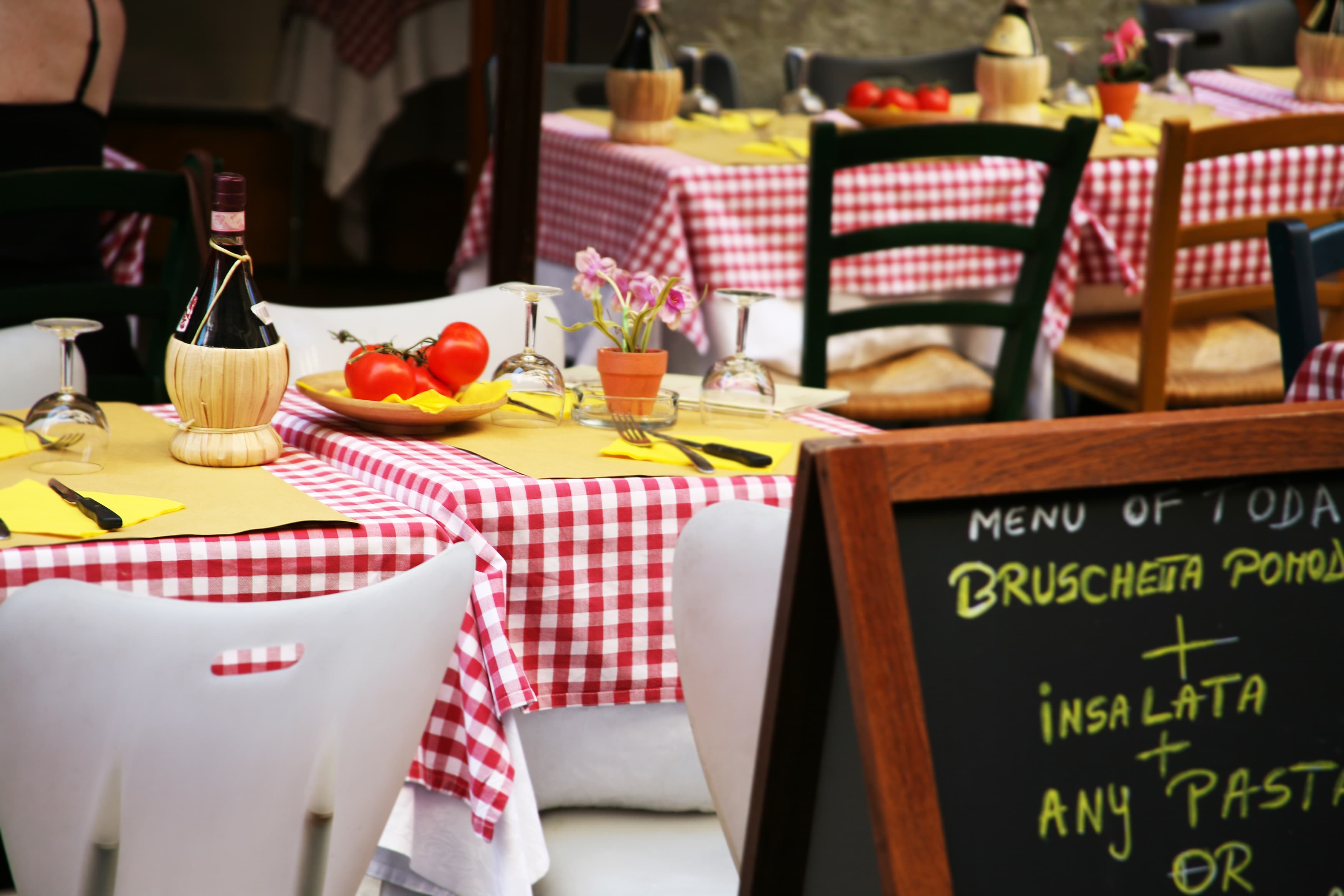
Eating in Florence: the best places to taste traditional dishes
Florence is a city with a long and rich culinary tradition. There are many great places to eat in Florence, but some of the best are the traditional restaurants that serve up classic Tuscan dishes.


